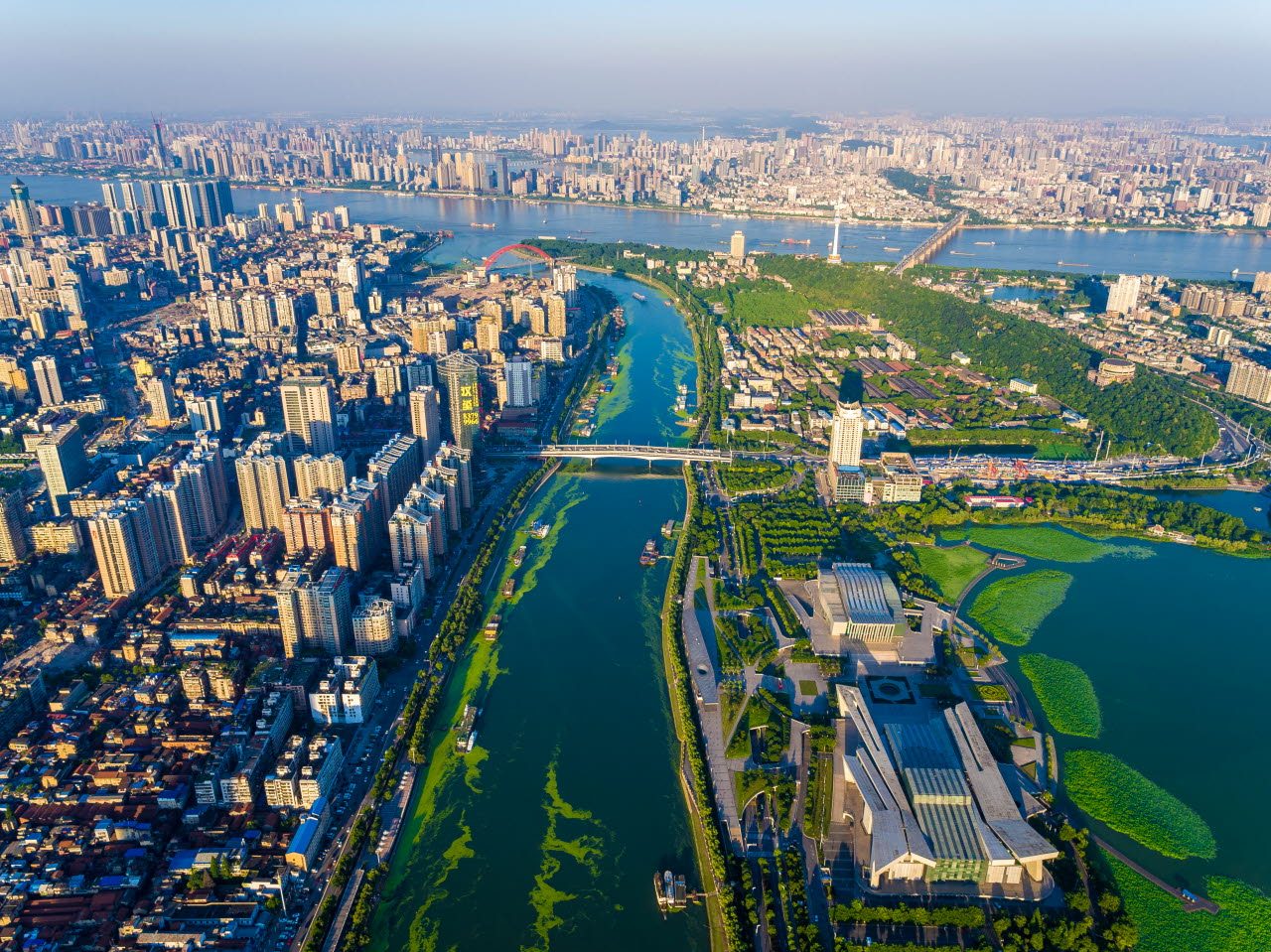Today marks the final day of the first month of the new decade; it is a time to look forward with renewed hope. For Chinese communities worldwide, today is the final day of the first week of the new year: the year of the rat. The rat is the first of the Chinese zodiac’s 12 signs, symbolic of renewal. Perhaps then, at this moment, a sense of fresh opportunity could span both the Eastern and Western hemispheres.
The character of the rat as presented by Chinese astrology is far removed from the verminous and pestilent creature of the European imagination. Those born under the sign are said to possess intuition, imagination and curiosity – and with good reason: as a species, rats have adapted ultra-successfully to the demands and opportunities of the modern metropolis. Naturally collaborative, thrifty and resourceful, making excellent use of discards and detritus, they’re natural champions of the circular economy and, in this respect at least, model urbanites.
This decade will take us to the midpoint of the urban century, an epoch which began in 1980 with a total global population of 6 billion, 40% of whom were urbanised; and will end, if current trends hold, with a total global population of 9.5 billion, 80% of whom will be urbanised. More succinctly, this is the century in which we learn whether we can make urbanisation work.
Good urbanisation results in the optimisation of services and systems. It creates improved labour markets, supply chains and mechanisms of exchange, linking and matching various types of economic actors. Perhaps most crucially, by leveraging the benefits of proximity, it allows for the efficient use of resources including land, energy, food, water, and buildings. Bad urbanisation has the antithetical effect: it locks large numbers of people into poverty, creates congestion that reduces labour productivity and exacerbates the stresses of climate change.
The big question for our urban century is which of the above outcomes ultimately prevails. In that respect, the Chinese approach to urbanisation becomes a really important experiment from which the rest of the world can learn.

Greg Clark CBE - Urbanist, thought leader and WBEF columnist
WATCH NOW: Belt and Road - the biggest story in the world
The collapse of the Soviet Union allowed Afro-Eurasian countries to rekindle those networks and relationships that were cut off, fragmented for 500 years of colonialism and the Cold War
Statistics illustrating the sheer scale of Chinese urbanisation are oft-cited, but worthy of recapitulation. There are 435 cities in the Greater China region; the country’s urban population is nearing 600 million and growing at a rate of 11 million per year; by 2035, there will be 74 Chinese city populations in excess of 2 million, while the overall national population will grow by 1.6% in that time. This, unequivocally, is mass-urbanisation, planned and managed on a scale heretofore never seen in human history. If it can be shown to work, the world will, in effect, have a blueprint for urbanisation that all other regions, but principally India, Africa, Latin America and South East Asia, can choose to adopt, adapt or ignore.
As we bear witness to the Chinese project, and speculate on its potential for success or failure, three core elements are worthy of particular scrutiny.
The first is the Belt and Road Initiative. BRI is more than just an exercise in trade and infrastructure expansion: it is a means by which China can shape the larger meta-pattern of urbanisation within its sphere of influence. The experience in Europe and North America has been that economic growth linked to urbanisation has tended to concentrate in a handful of very successful city regions. The rising tide may have lifted all boats, but it has also exerted a pull-effect on capital and people, leaving lesser regions diminished. By reinforcing historic land routes through Eurasia and into Europe, China aims to challenge this pattern and grow its less developed regions and cities.
Western China, a region accounting for two-thirds of China’s land area, but only one-third of its population, is in many ways the heartland of China’s BRI related growth ambitions. Chongqing, a city populated by 15 million people and capital of the Chengyu city cluster, is the designated centre of the New International Land Sea Trade Corridor, a logistics passage connecting eight provinces in the region. Among the project’s principal backers is the government of Singapore. The trade corridor should help Chongqing to develop an economic niche and a broader sense of civic and cultural identity. The Chinese calculation is that, as BRI matures, businesses that might otherwise have gravitated elsewhere, will look westwards to emerging cities like Chongqing.

As the Year of the Rat dawns, Chinese cities will strive to shape the middle phase of the urban century
Much has been said of China’s city cluster policy, and attention has, perhaps understandably, tended to focus on the “big-three” regions: the Greater Bay Area in the south; the Jing-Jin-Ji region around Beijing; and the Yangtze River Delta, which centres on Shanghai. It is, though, important to note that the policy comprises a total of 19 megacity clusters, all of which are undergoing a process of managed integration through coherent regional planning, development of high-capacity transport systems, and the reallocation of industrial assets and population settlements. Increasingly, the central government of China is devolving powers to these regions, in a way that would not previously have been possible. This is particularly evident in relation to land allocations and transport planning.
The stated intention of the city cluster policy is to stimulate job creation, increase public transport capacity, improve air quality through carbon efficiencies and, crucially, ensure that neighbouring cities do not get into unhelpful competition with one another. Such competition can be zero-sum or mutually damaging; clusters instead are seeding complementary relationships between cities.
Of the “big-three” clusters, the Yangtze River Delta is the largest, most productive and most populous. As is often the case with China, the numbers are staggering. A cluster of 28 cities, YRD is home to a total of 220 million people, nine international airports, the world’s busiest and fourth busiest sea container ports, a third of all Chinese exports and 25% of her GDP. Work to integrate the Delta is already underway and is bringing forward interesting opportunities around new industrial zones and airport growth. The beating heart of the region – or, in the local nomenclature, the “dragon’s head” – is the city of Shanghai.
“This decade will take us to the midpoint of the urban century, an epoch which began in 1980 with a total global population of 6 billion, 40% of whom were urbanised; and will end, if current trends hold, with a total global population of 9.5 billion, 80% of whom will be urbanised.”
Shanghai was first settled by humans 7000 years ago; in Chinese, the name roughly translates as “the land above the sea” and it has, since those early days, been a place that looks out across the ocean to the world. It was, in the 19th and early 20th century, a prototype global city, and has a well-earned reputation for cosmopolitanism. It was also the birthplace of Chinese Communism and cradle of the revolution, but more recently has led the national process of “reform and opening-up”; it could, then, be fairly said that what happens in China, tends to happen first in Shanghai.
The city now hosts an amazing array of international businesses and renowned higher education institutions and is well on the road to becoming one of the world’s top 10 cities. Indeed, it will be fully recognised as such within the next decade. For Shanghai, the challenge of the urban century will be to match its high-quality infrastructure investment, which includes the construction of five new rail lines in the past five years, with economic diversification and the pursuit of a smarter, greener future.
Inclusivity and innovation are coded into the city’s DNA; in recent years these deep-rooted character traits have come fully back to the fore. With an established metropolitan plan, a stable population of around 25 million within a region that comfortably allows for growth, and the required infrastructure development in process, the city has all the hardware necessary for success. Massive and ongoing investment into what we might call soft-power assets – universities, innovation capabilities, the visitor economy and general brand building – means that the software is falling into place as well.
China has become a lab for experiments in rapid and mass-planned urbanisation. The progress of the Belt and Road Initiative, the fortunes of her 19 megacity clusters and the influence of her growing cohort of global cities will be among the markers against which other nations are measured. As the year of the rat dawns, the eyes of the world are on Chinese cites as they plot and shape the middle phase of our urban century.

